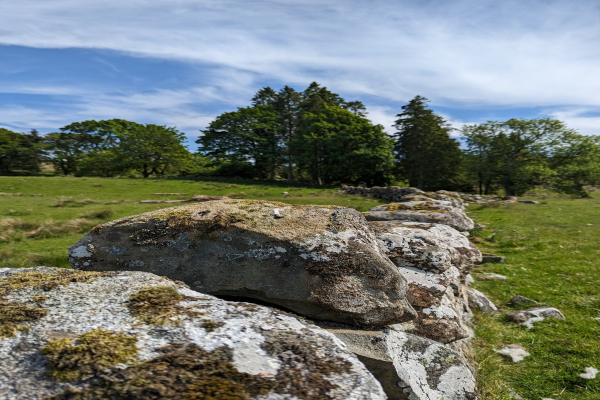Understanding GAEC 7 and Cross-Compliance On-Farm
28 February 2025The development of and investment in new farm infrastructure and land improvement is recognised as an important part of pushing the agricultural sector forward and making it resilient and ready for the challenges of the future. However, the Rural Payments and Inspections Division (RPID) has recorded an increase in the number of businesses falling foul of cross compliance regulations, namely those set out in the Good Agricultural and Environmental Condition (GAEC) regulations and more specifically, GAEC 7: The Retention of Landscape Features.
Failing to take cross-compliance requirements into account can result in financial penalties and the setting-back of any plans you have for your business. There are increasingly sophisticated methods – a combination of satellite imaging and ground-truthing - for identifying whether a business is in breach. Therefore, it’s good to take the time now to understand GAEC 7 and how it may affect any plans you have for your land.
GAEC 7 In Detail
Scotland has a diverse landscape with a dynamic mix of semi-natural habitats, linear features and protected monuments, all of which contribute to our national identity, while also bolstering nature conservation and mitigating against climate change. These habitats, features and monuments often require individuals with special, high value skillsets to maintain and restore them, and in that regard are also important for our local economies. In recognition of all of this, Scottish Government brought in GAEC 7, The Retention of Landscape Features to protect these important assets.
The details of GAEC 7 are set out below:
Key Aspects Of GAEC 7
| Aspect | Rationale |
|---|---|
| Retention of landscape features | Farmers must preserve hedges, trees in line, groups of trees, ponds, ditches, field margins, and other natural elements important for biodiversity. The removal of these features is prohibited unless explicitly authorised by the relevant authorities |
| Ban on cutting hedgerows and trees during nesting seasons | To protect birds and wildlife, restrictions are placed on cutting hedges and trees during critical breeding and nesting periods |

Key Rules Of GAEC 7
| Rule | You must not | Exemption |
|---|---|---|
| 1 | Remove or destroy drystone or flagstone dykes, turf and stone-faced banks, walls, hedges, ponds, watercourses or trees (in line, in a group or isolated) without the prior written consent of the Scottish Ministers | |
| 2 | Trim hedges or lop branches off trees during the bird nesting and rearing season starting on 1 March and ending on 31 August | A hedge or tree may be trimmed or cut from 1 August if the hedge or tree is in a field which will be sown with oilseed rape or temporary grass within that month or another crop subject to prior written consent of Scottish Ministers. This exemption only applies to trimming/cutting the side of the hedge or tree which is adjacent to the oilseed rape, grass, or other crop. Alternatively, for the purposes of road safety hedge-laying can be carried out up to and including 31 March |
| 3 | Cultivate land within two metres of the centre line of a hedge | Cultivating to establish a green cover where one doesn’t already exist. A green cover excludes crops that are grown for a commercial purpose, for example arable crops including crops that are under sown with grass. Cultivating to establish a new hedge |
| 4 | Apply fertilisers (organic manure, chemical or nitrogen) or pesticides within two metres of the centre line of a hedge | Applications of fertilisers or pesticides to establish a new hedge. This applies from the time the land is prepared for planting the new hedge to the end of the hedge’s third growing season. Spot application of pesticides to control injurious weeds, invasive species and, after prior written consent of the Scottish Ministers and or other statutory bodies, certain other weed species |
| 5 | Alter, damage or destroy a Scheduled Ancient Monument without prior written consent of the Scottish Ministers, known as Scheduled Monument Consent | |

Activities Not Requiring Consent Under GAEC 7
| Action |
|---|
| Widening field entrances to enable access for livestock or farm machinery |
| Fell trees which are exempt from or are covered by a ‘Felling Licence’ issued by Scottish Forestry |
| Fell trees that are dead, diseased, damaged or insecurely rooted and because of its condition it poses a risk to human safety |
Identify If You’re In Breach Before Taking Action
GAEC 7 is a mandatory component of cross compliance. Failure to take due diligence, unintentionally or otherwise could result in financial penalties.If in doubt about whether a potential project could result in the loss of a protected habitat, feature or monument, farmers are encouraged to get in touch with their local RPID office for further advice.
For more information on the regulations please visit Retention of landscape features (GAEC 7) at https://www.ruralpayments.org/.
You can also check that you know the rules and have adhered to them by working through the checklist here:
Cross Compliance Checklist - GAEC 7 Retention of Landscape Features
If you have further questions, you can contact the FAS Advice line for free impartial advice.
Written By: Alec Pirie - alexander.pirie@sac.co.uk
Sign up to the FAS newsletter
Receive updates on news, events and publications from Scotland’s Farm Advisory Service

